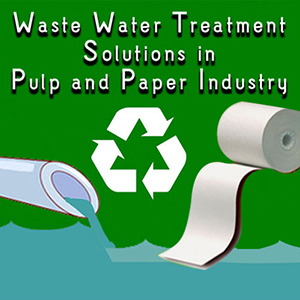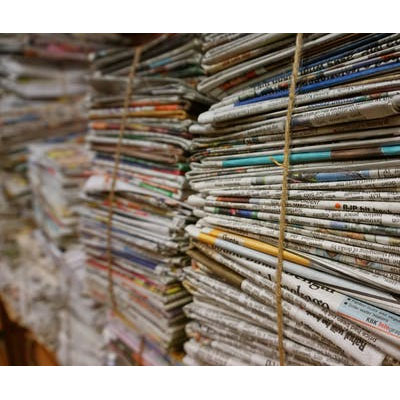Balancing Paper Manufacturing Machinery's Impact on the Environment

Introduction
The global economy relies heavily on the paper manufacturing sector, which supplies essential products for a wide range of applications. Yet, as the world increasingly prioritizes sustainability and eco-conscious strategies, the environmental implications of paper production have gained prominence. Within this context, the role of paper manufacturing machinery emerges as a pivotal factor warranting careful examination.
Paper Manufacturing Machinery and its Role
Paper manufacturing machinery encompasses a wide range of equipment and processes involved in turning raw materials, primarily wood fibers, into the final paper products we use daily. This machinery includes pulping systems, paper machines, drying and finishing equipment, and more. While these technologies have enabled the efficient production of paper goods, they also contribute to environmental challenges.
Resource Consumption and Deforestation
One of the primary concerns associated with paper manufacturing machinery is the resource consumption required for paper production. The machinery relies heavily on raw materials such as timber, leading to deforestation and habitat loss. This has a direct impact on biodiversity and the planet's ecological balance. Addressing this concern necessitates exploring sustainable alternatives, such as sourcing wood from responsibly managed forests or using recycled fibers.
Energy Consumption and Emissions
Operating paper manufacturing machinery necessitates a substantial energy input, frequently sourced from non-renewable outlets. This results in the release of greenhouse gas emissions and airborne pollutants, impacting both local air purity and the broader issue of global climate change. In response to the global pursuit of cleaner energy alternatives, the paper sector can embrace innovations incorporating renewable energy sources and enhanced energy efficiency within machinery processes.
Waste Generation and Water Usage
Paper manufacturing machinery generates substantial amounts of waste, including chemicals used in pulping and paper treatment processes. Additionally, large quantities of water are required throughout the papermaking process, leading to water scarcity concerns in some regions. Employing closed-loop systems that recycle water and implementing cleaner production methods can mitigate these issues.
Sustainable Materials Utilization
Paper manufacturing machinery relies on the extraction of wood fibers from trees, often contributing to deforestation and habitat destruction. However, forward-thinking manufacturers are exploring alternative materials. Agro-based fibers, agricultural residues, and even fibers from non-wood plants are gaining attention as eco-friendly alternatives that reduce the industry's reliance on traditional timber.
Technological Innovations and Sustainability
To address the environmental impact of paper manufacturing machinery, the industry is turning to technological innovations. Advancements in machinery design, such as optimized pulping techniques and streamlined papermaking processes, aim to reduce resource consumption and waste generation. Additionally, digitalization and automation can enhance efficiency, minimizing energy usage and emissions.
Circular Economies and Closed-Loop Systems
To combat waste, closed-loop systems are gaining traction. Rather than discarding waste materials, such as pulping residues, these systems reintegrate them into the production cycle. Innovations like converting pulping waste into bio-based materials or using it to generate energy are turning what was once seen as waste into valuable resources.
Energy Efficiency through Technological Advancements
Paper manufacturing machinery has long been associated with energy-intensive processes. However, the landscape is shifting with the adoption of energy-efficient technologies. From smarter pulping techniques that require fewer resources to highly efficient drying and finishing equipment, these advancements are reducing energy consumption and, consequently, greenhouse gas emissions.
Digitization and Automation
The convergence of digital technologies and automation is causing a transformative shift in the landscape of paper manufacturing machinery. Through the deployment of sophisticated sensors and real-time data analysis, production processes are being finely tuned, leading to reduced downtime and diminished energy wastage. Automation further enhances precision and uniformity in product quality, thereby curbing the necessity for rework and subsequently lowering resource consumption.
Water Management and Conservation
Water is a vital component of paper manufacturing, and its excessive use has raised concerns about water scarcity. Innovative solutions include closed-loop water systems that recycle and treat water used in various processes. By reusing water, the industry can significantly decrease its water footprint and alleviate strain on local water sources.
Collaboration and Industry Standards
Addressing the environmental impact of paper manufacturing machinery requires collaborative efforts among manufacturers, policymakers, and consumers. Industry standards that promote sustainable practices and certifications like Forest Stewardship Council (FSC) help guide the industry toward responsible sourcing and production.
Conclusion
The environmental impact of paper manufacturing machinery is a critical consideration as we strive for a more sustainable future. By adopting cleaner production methods, incorporating renewable energy sources, and prioritizing responsible sourcing of raw materials, the paper industry can mitigate its ecological footprint. Balancing the benefits of paper products with the preservation of our environment requires collaboration among manufacturers, policymakers, and consumers to create a more sustainable paper production ecosystem.









